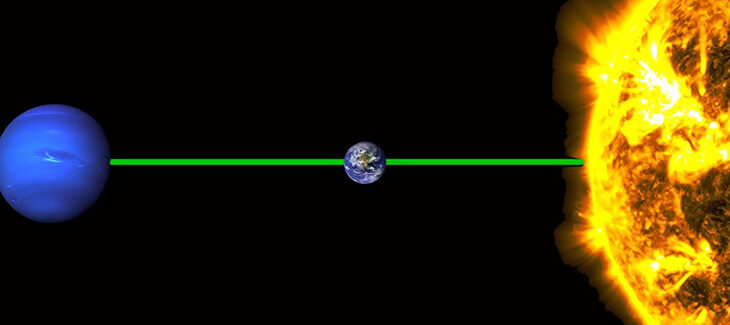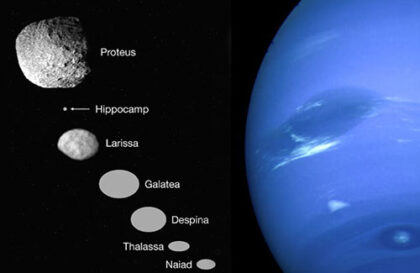Neptune is the eighth planet in the Solar System, farthest from the Sun. It is the fourth largest and third most massive of all the giant planets in the Solar System. The orbit intersects with the orbit of Pluto in some places. Halley’s Comet also crosses Neptune’s orbit.
The mass of Neptune is about 17.2 times that of Earth, and the diameter of its equator is about 3.9 times that of Earth. The planet was named in honor of the Roman god of the seas.
Neptune is located at an average distance of 2.8 billion miles (4.5 billion kilometers) from Earth. If we compare the length of Mercury and Neptune from the Sun, Mercury is about 36 million miles (57.9 million km). That is, Neptune is one hundred thousand times farther from the Sun. The distance from the Oort Cloud to the Sun is more excellent than Neptune’s, about 9.7 trillion km.
The average time it takes light to travel between Earth and Neptune is about 4 hours, 1 minute 29.68 seconds.
Scientists have developed a method to calculate the distance between two planets in real-time, using their respective orbits and the known distance to the Sun.
Radar and telescopes are usually used to measure the distance to Neptune. Radar is used to bounce signals off planets and other objects in space, allowing scientists to calculate the time it takes for the signals to return. This method was used to measure the distance to Venus and other planets.
However, because of the great distance between Neptune and Earth, radar is not a practical method of measuring the distance to Neptune. Instead, scientists use telescopes to measure the angle between Neptune and a distant star. By measuring this angle at two different points in Earth’s orbit around the Sun, scientists can calculate the distance between Earth and Neptune. This method, called parallax, is the most accurate way to measure the distance to celestial bodies.
Credit: Las Cumbres Observatory
One of the main problems in distance measurement is the light distortion caused by the Earth’s atmosphere. This distortion can cause the angle between Neptune and a distant star to appear different than it is, leading to inaccurate measurements. To overcome this problem, scientists use adaptive optics, which can correct the distortions caused by the Earth’s atmosphere. As Neptune orbits the Sun, its distance from Earth changes, making it difficult to get a single, accurate measurement. Scientists take numerous measurements over time and use the average length to determine Neptune’s distance from Earth.
Banner image: John Wenz/Inverce from NASA Images
Image credit:
https://www.inverse.com
https://www.facebook.com



